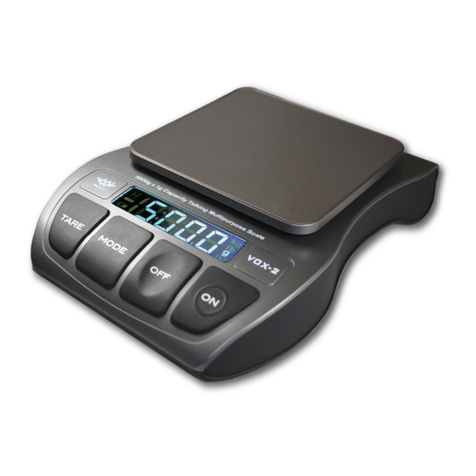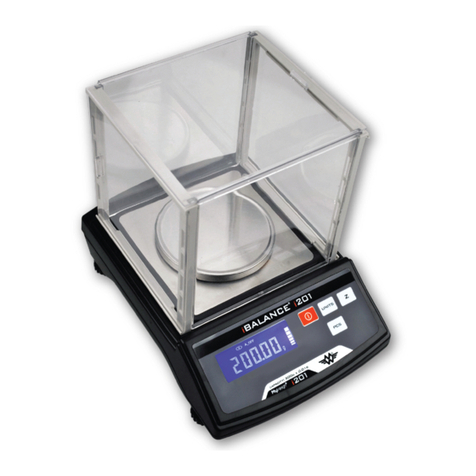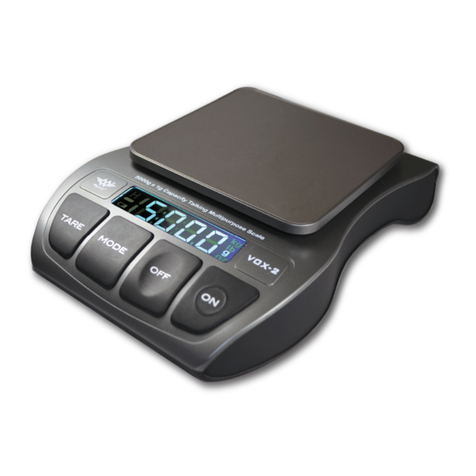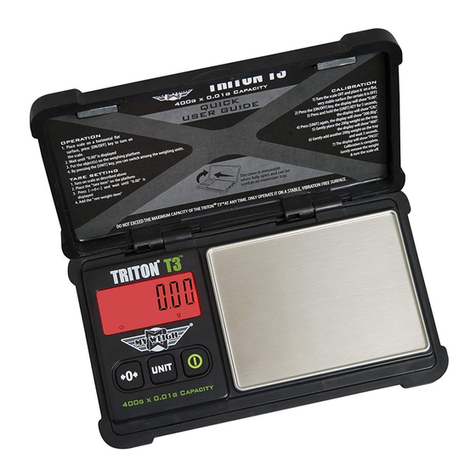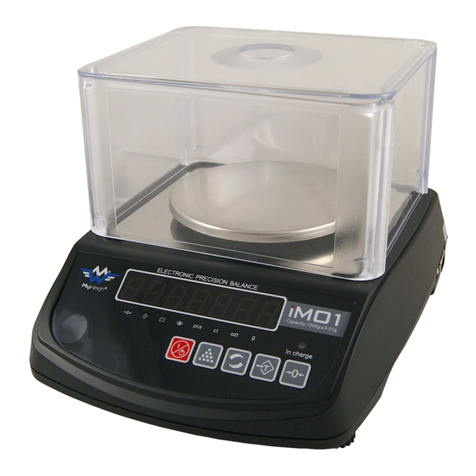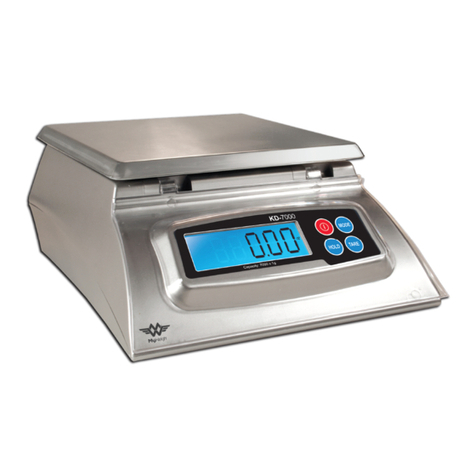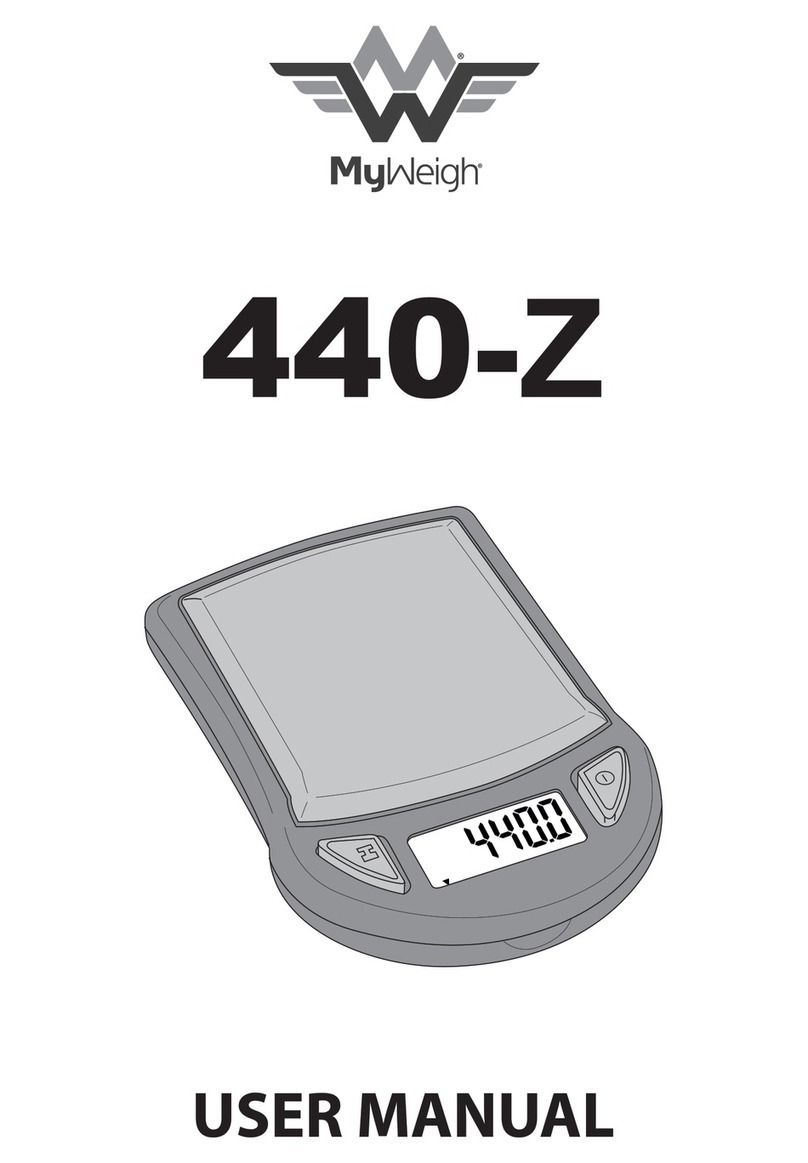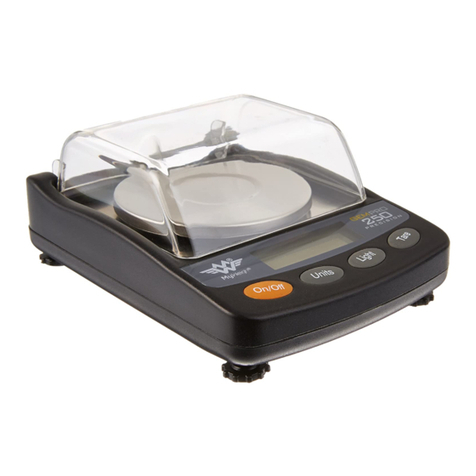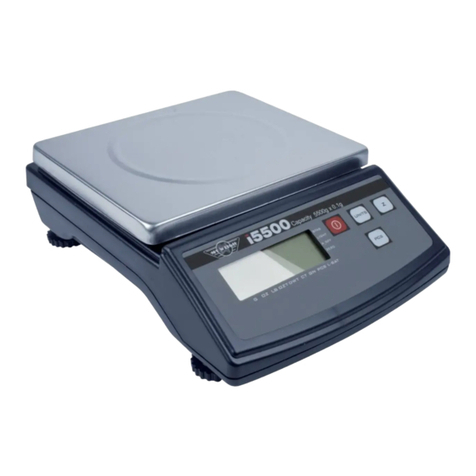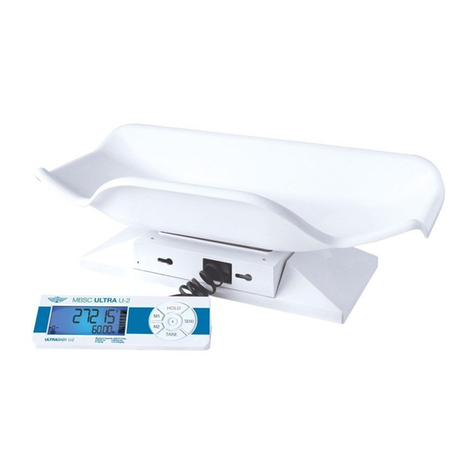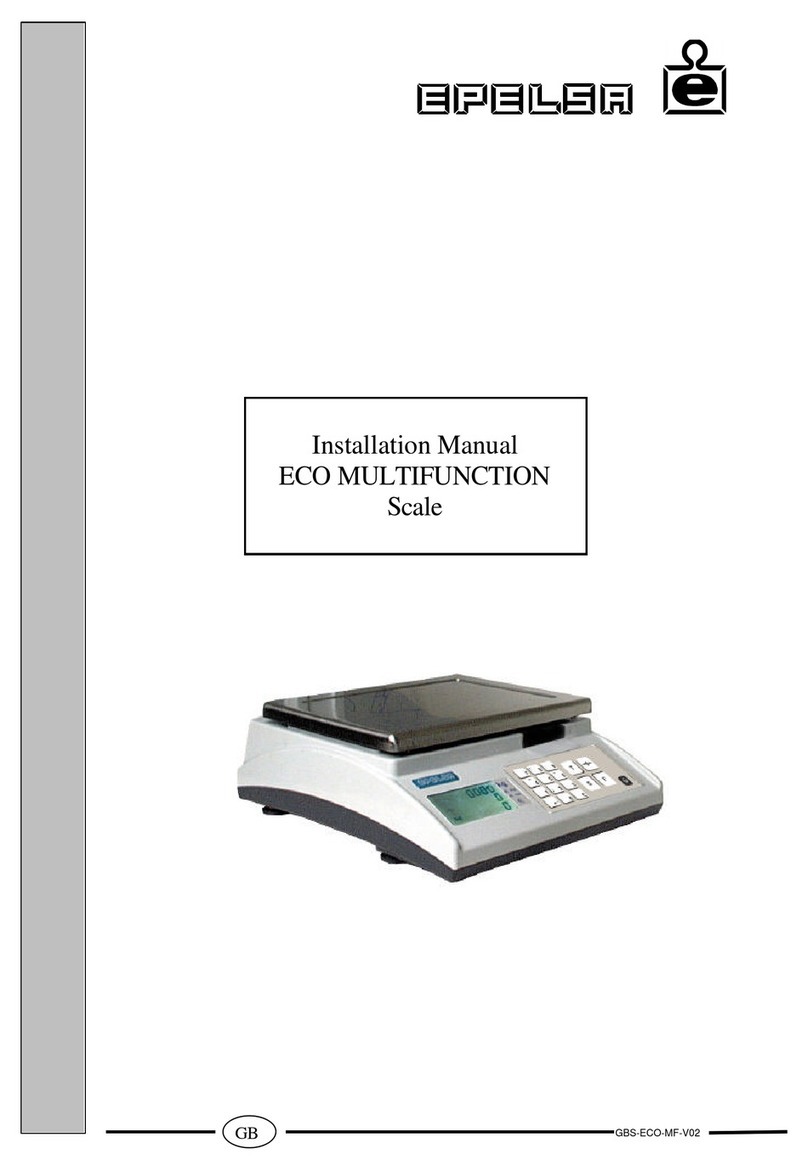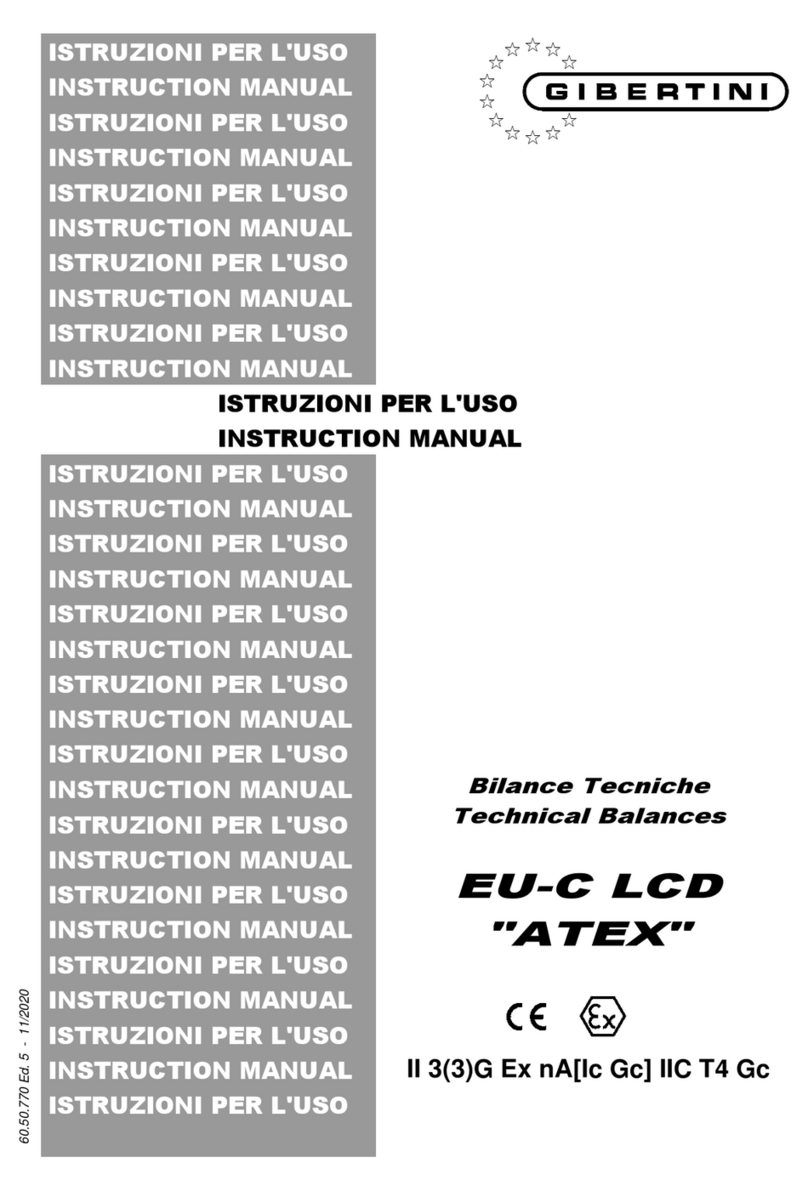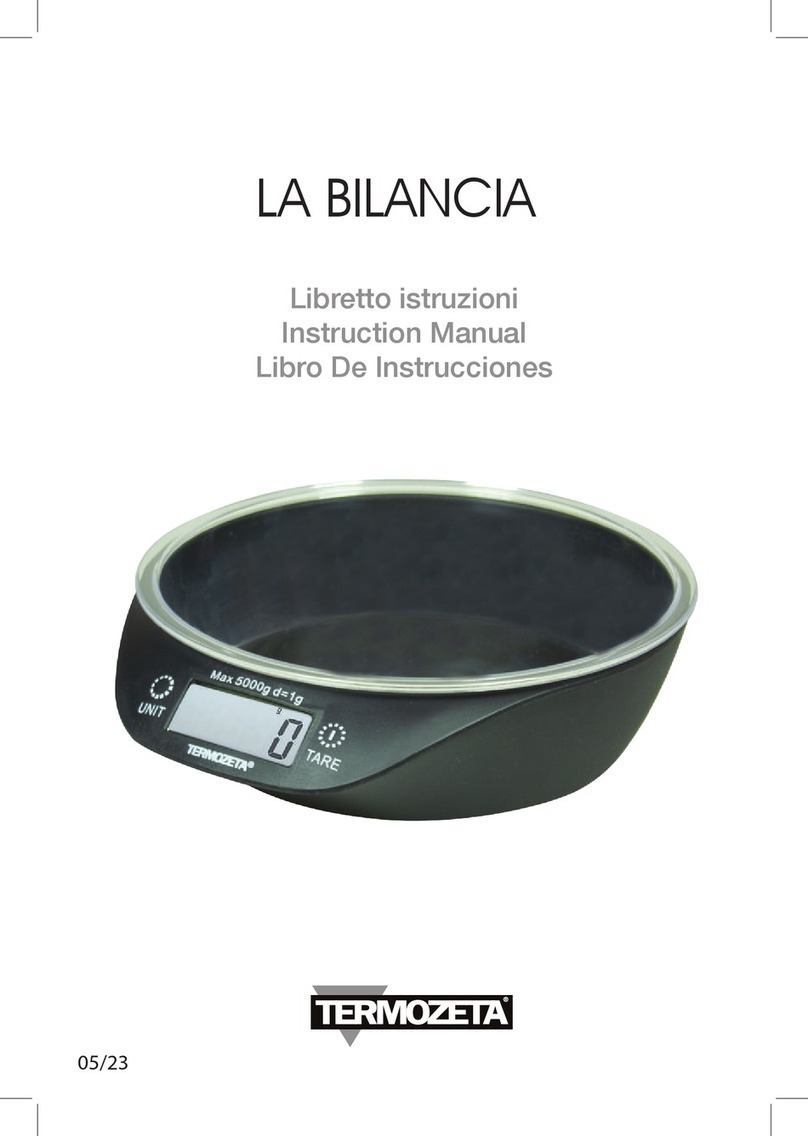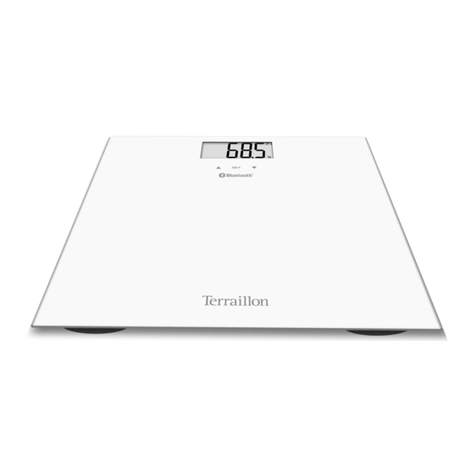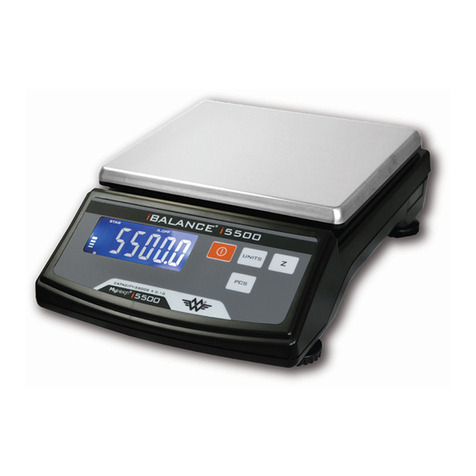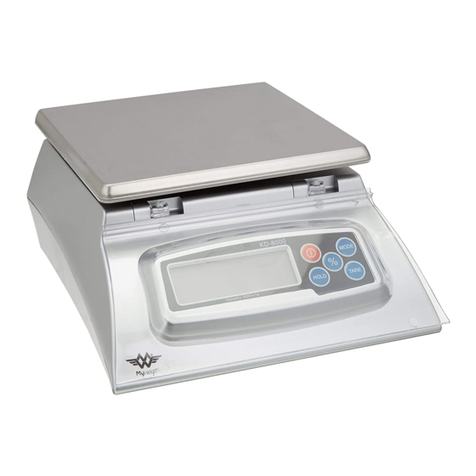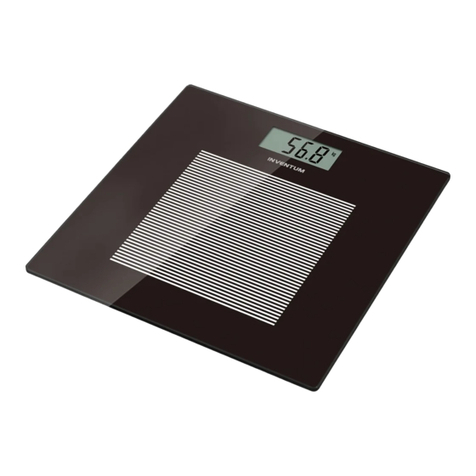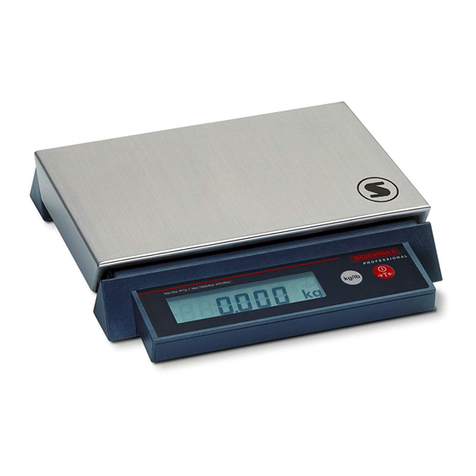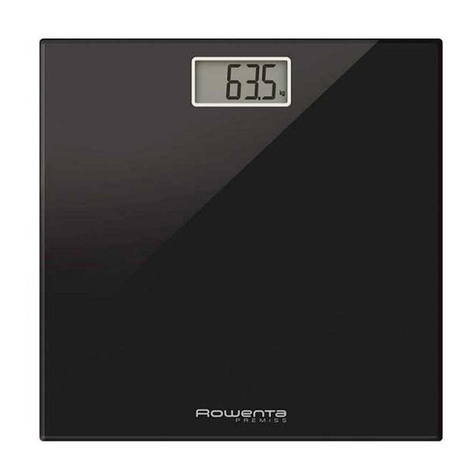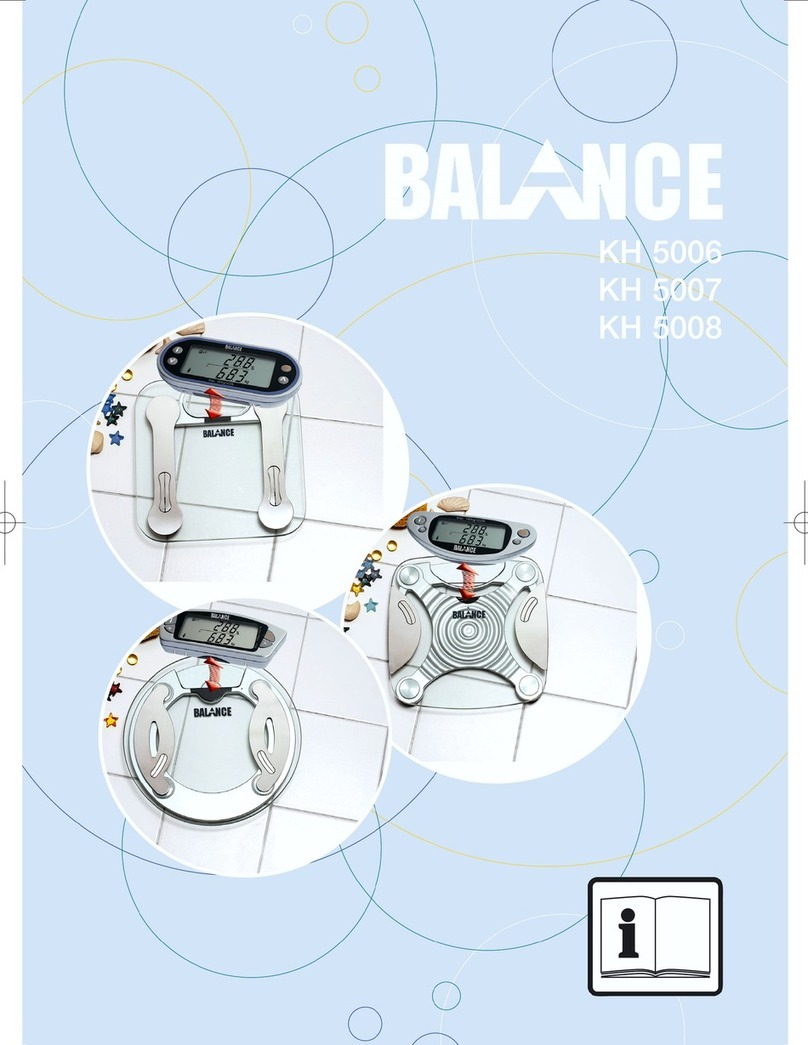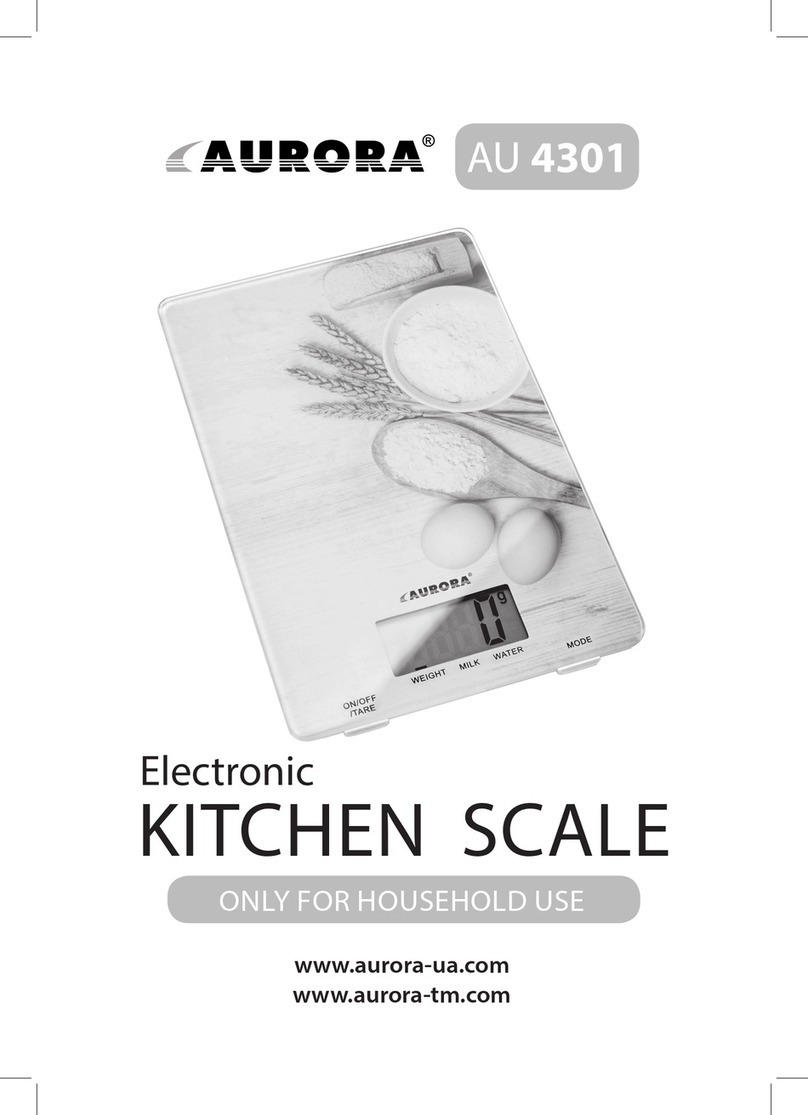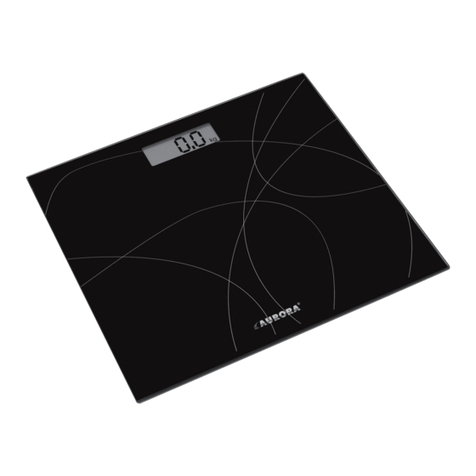5. Calibration:
Calibration is only for ADVANCED USERS or scale technicians and should only be performed if
absolutely necessary. There are two calibration methods available: one is using standard professional
calibration weights, the other is the selection of different geographic location codes (gravity mode). The following
is detail:
(1) Press down the “T” key until the indicator displays “GE.Uxx”, “GE.oxx” or “GE. FAC”;
a. “GE.Uxx” means: USA geographic location code “xx” is selected;
b. “GE. FAC” means: Factory geographic location code is selected;
c. “GE.oxx” means: Other(except for USA and Factory) geographic location code “xx” is selected;
(2) Press the “M” or “D” key to change the geographic location code; please refer the geographic location
code table and maps at the end of the manual;
(3) After selecting the appropriate geographic location code, press the “T” key, the scale will store your
selection and display “CAL-0” or “Go.on?”(? is flashed);
If “CAL-0” is displayed, that means the scale must be calibrated once more by using standard weights
and you should proceed to the next step;
If “Go.on?” is displayed and the “"” key is pressed, the scale will use the selected geographic location
code and reset automatically to resume normal weighing mode;
If “Go.on?” is displayed and the “T” key is pressed, the scale will display “CAL-0” and you should
proceed to the next calibration step.
(4) Remove all weights from the scale platform, press the “T” key , the “0” in “CAL-0” will flash
(5) After the reading (0.00) becomes stable, the scale will display “CAL-F”; place the correct standard
weight(s) on the platform (60kg standard weight for HD150, 120kg standard weight for HD300), press
the “T” key, the “F” in “CAL-F” will flash
(6) After the readings (60.00 for HD150 or 120.00 for HD300) are stable, the indicator will display “CAL-0”;
remove the weight(s) from the platform, press the “T” key; the “0” in “CAL-0” will flash, and then the
display will reset after 2-3 seconds
Calibration is now complete.
6. GRAVITY MODE
The Gravity Mode feature provides a means of adjusting the scale’s internal calibration factors to
compensate for variations in acceleration due to gravity at different geographic locations. These differences
can cause a given mass to indicate a slightly different weight at an end-users (local) site than it did at the
Calibration (CAL) site.
The scale maintains two gravity setting values: one is local site gravity value; the other is calibration site
gravity value. The scale will use th%# relationship between calibration and local gravity for its weight
calculations.
We have compiled a list of local gravity values for some areas of the world. You only need select the
index number of them according to the above step1 to step3. The latitude and altitude of your location both
effect gravity and the calibration of your scale. It is important to select the proper code. If your location is not
listed, select closest one. This &'() of adjustment needs no calibration weights .
However, whenever possible, we strongly recommend that you calibrate the scale by using standard
professional calibration weights.
*))%()+,#
-#USA geographic location code:












